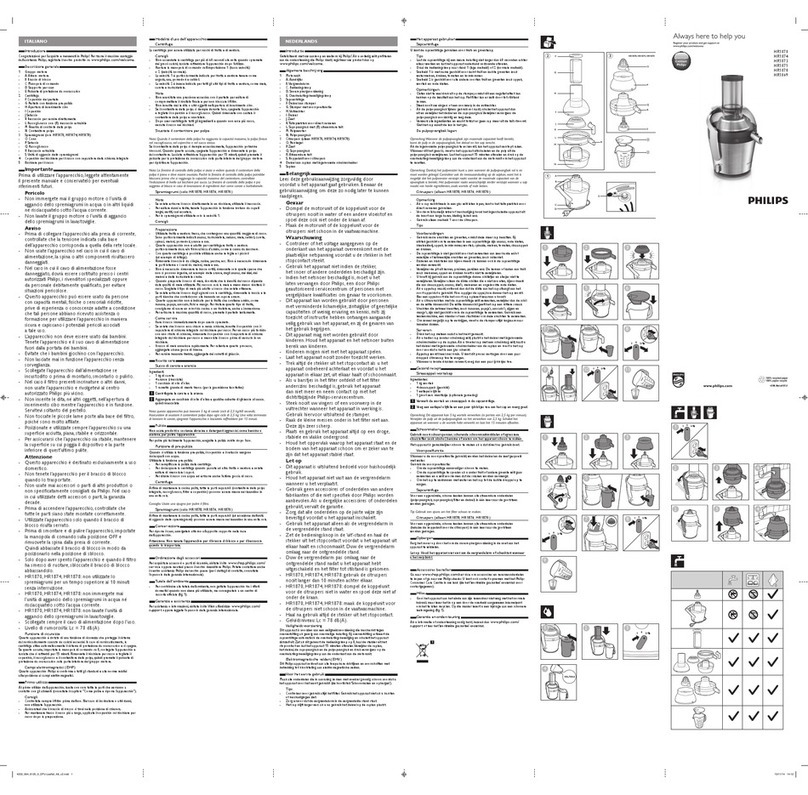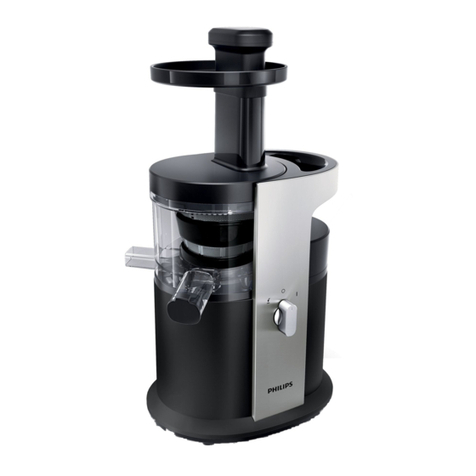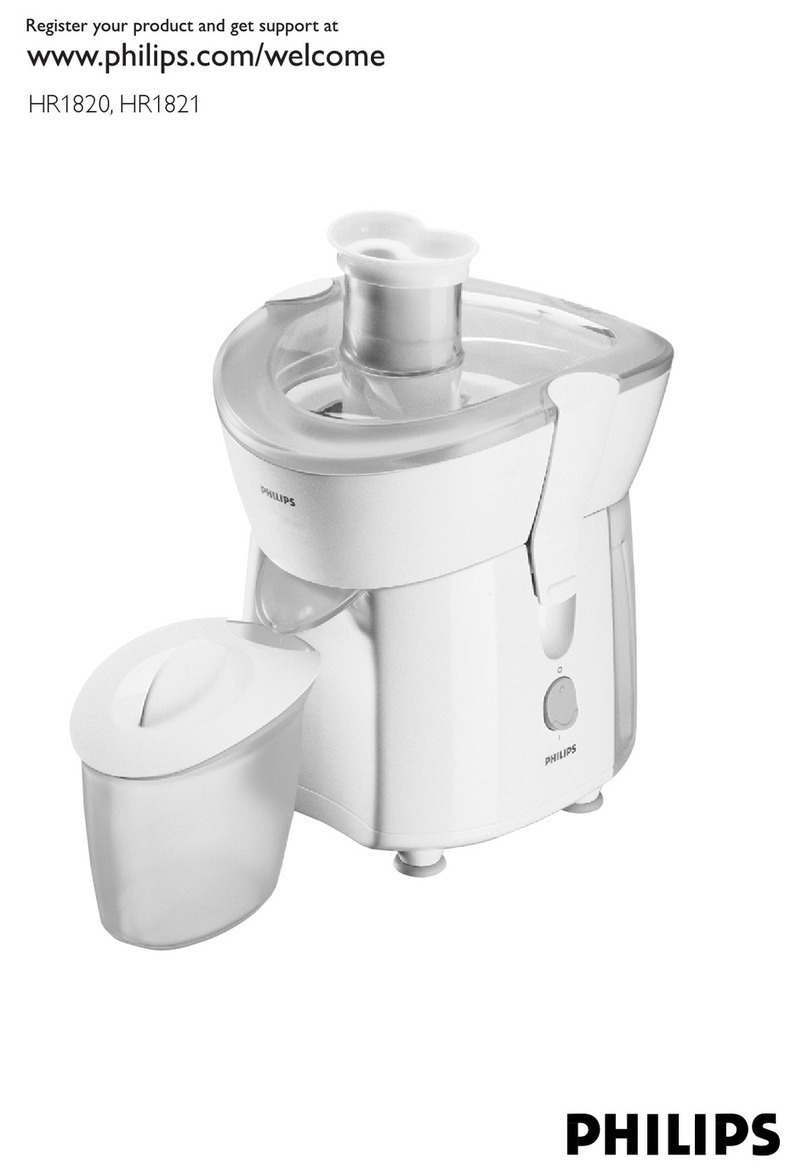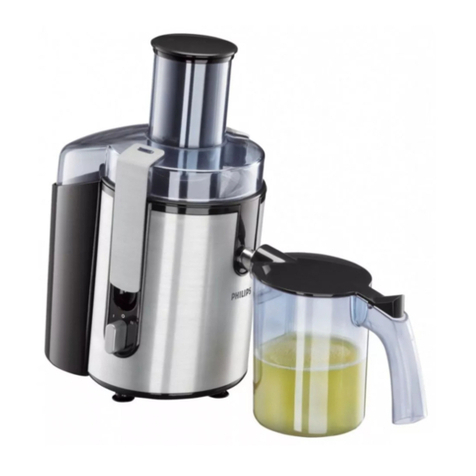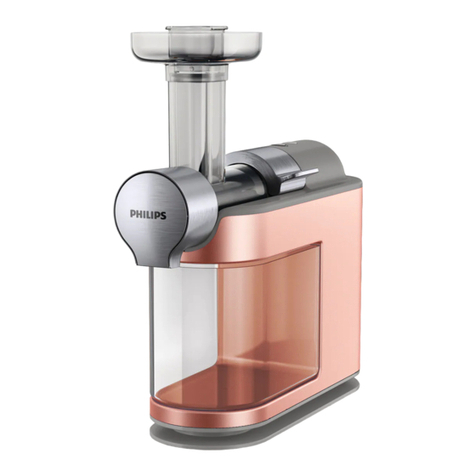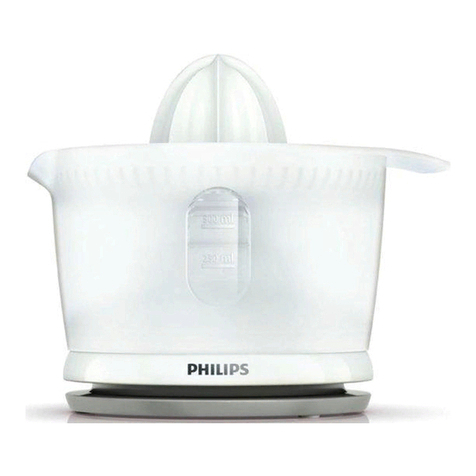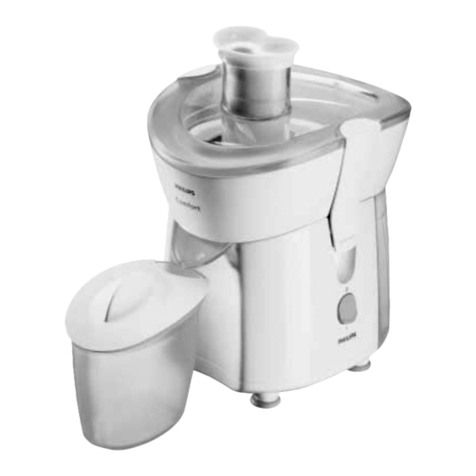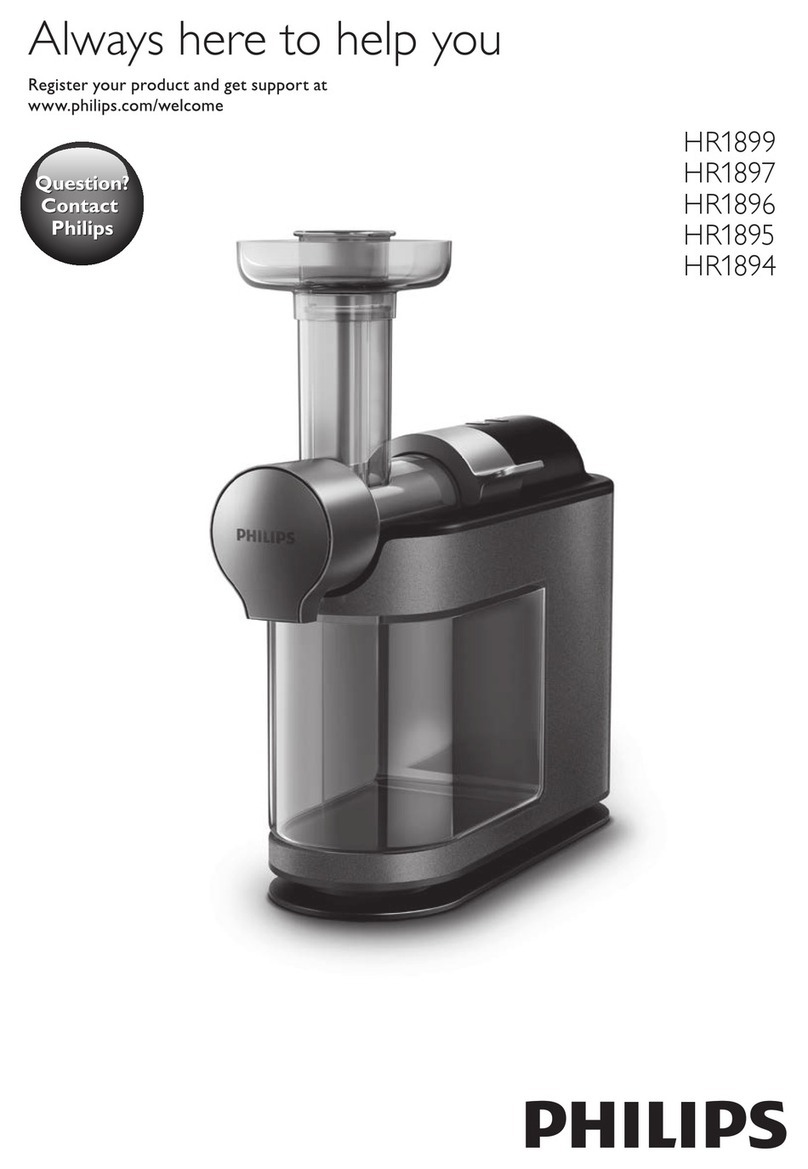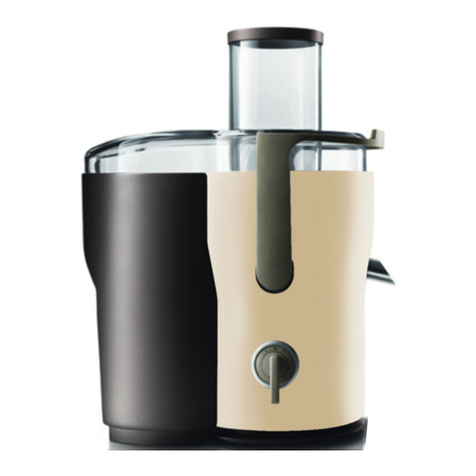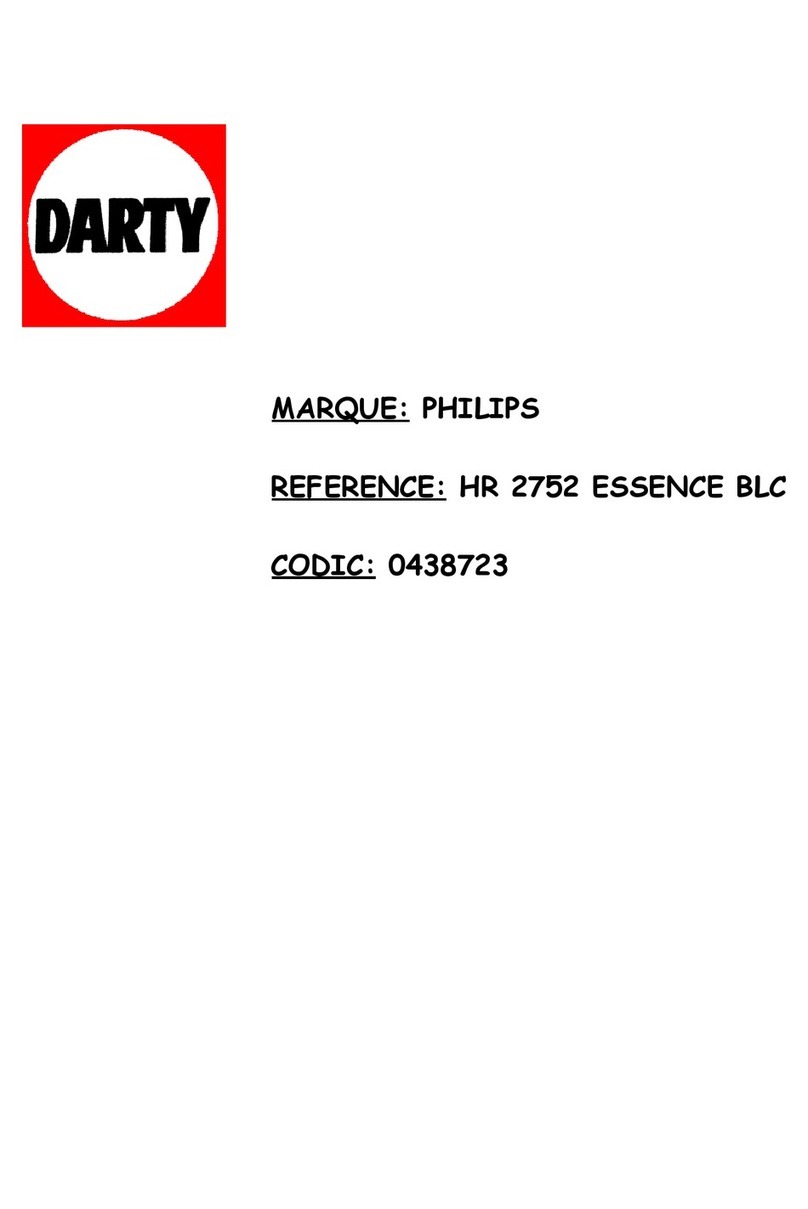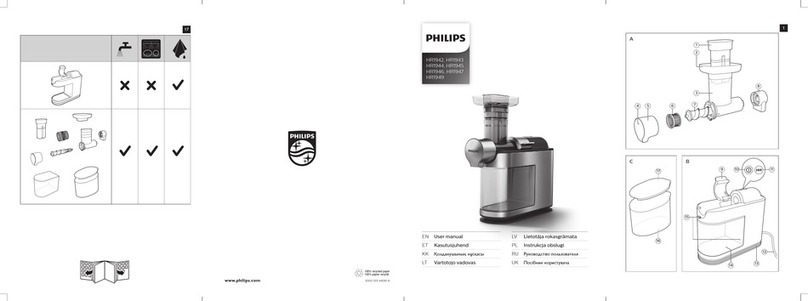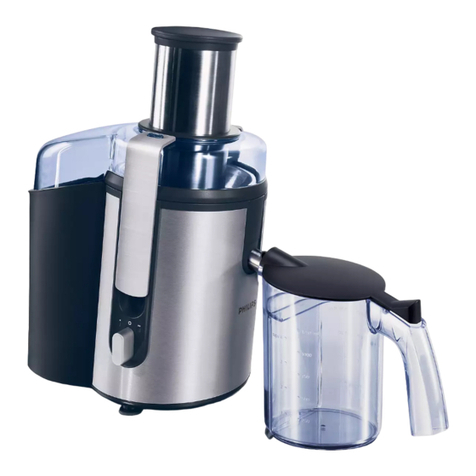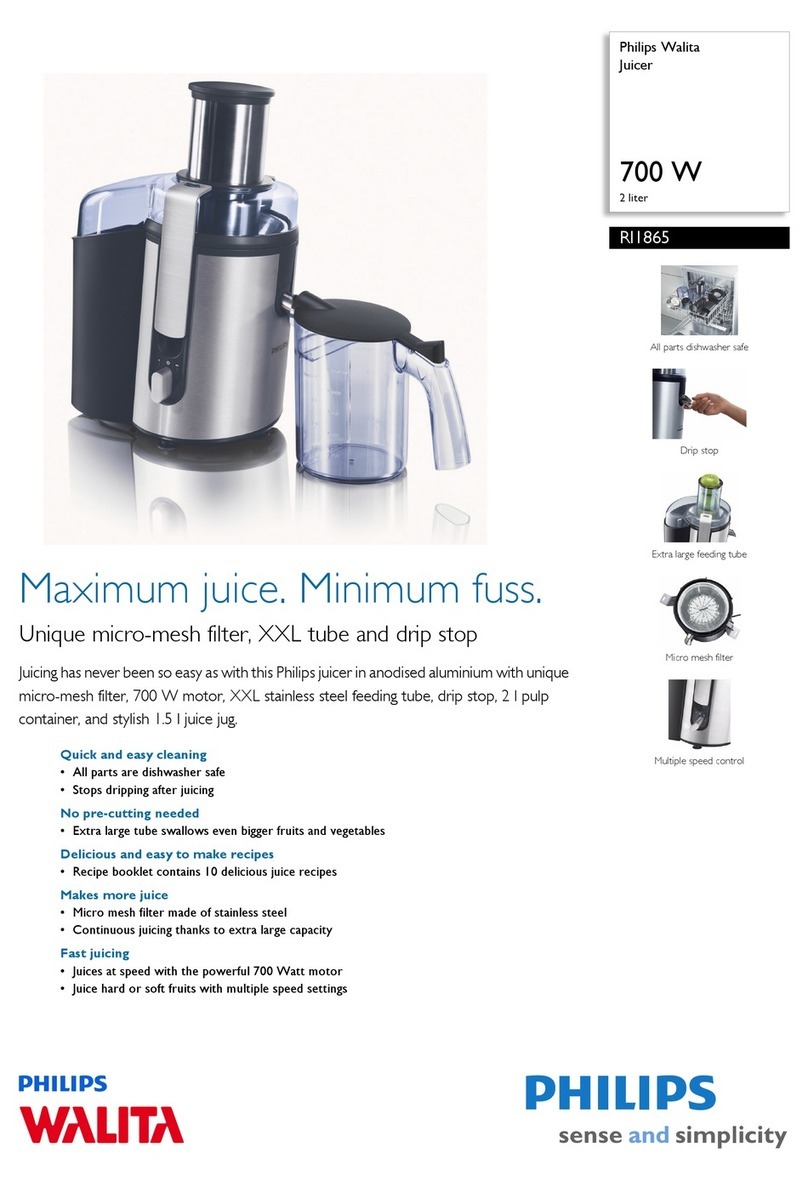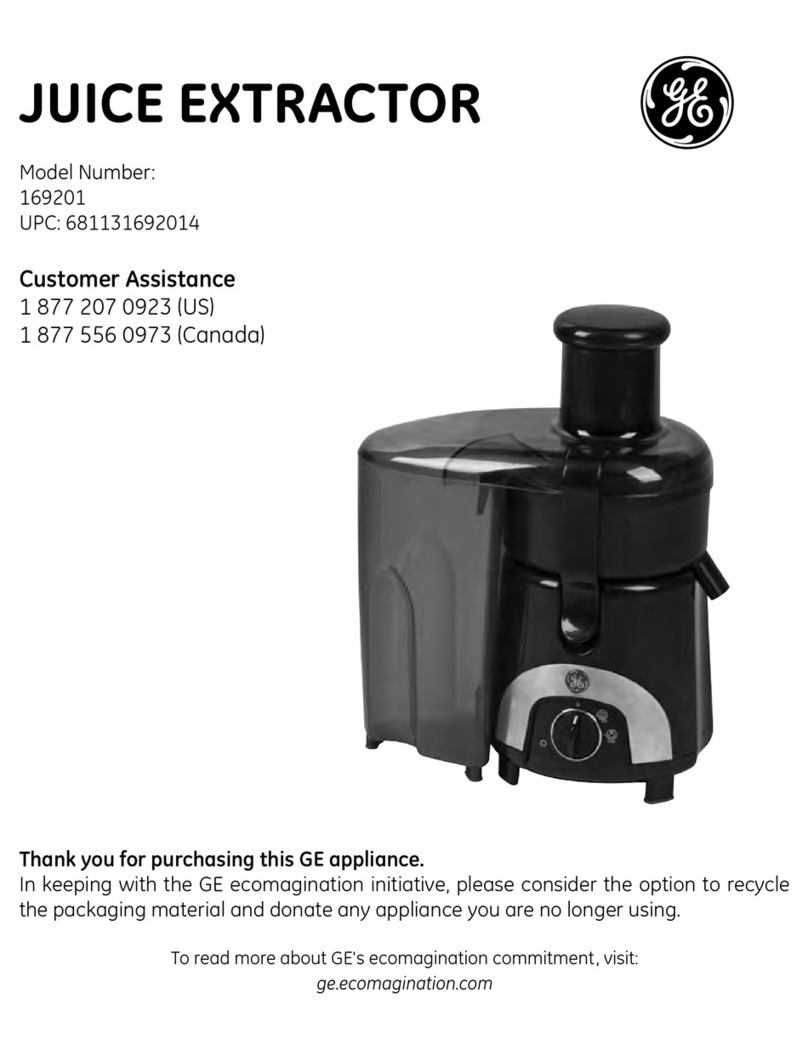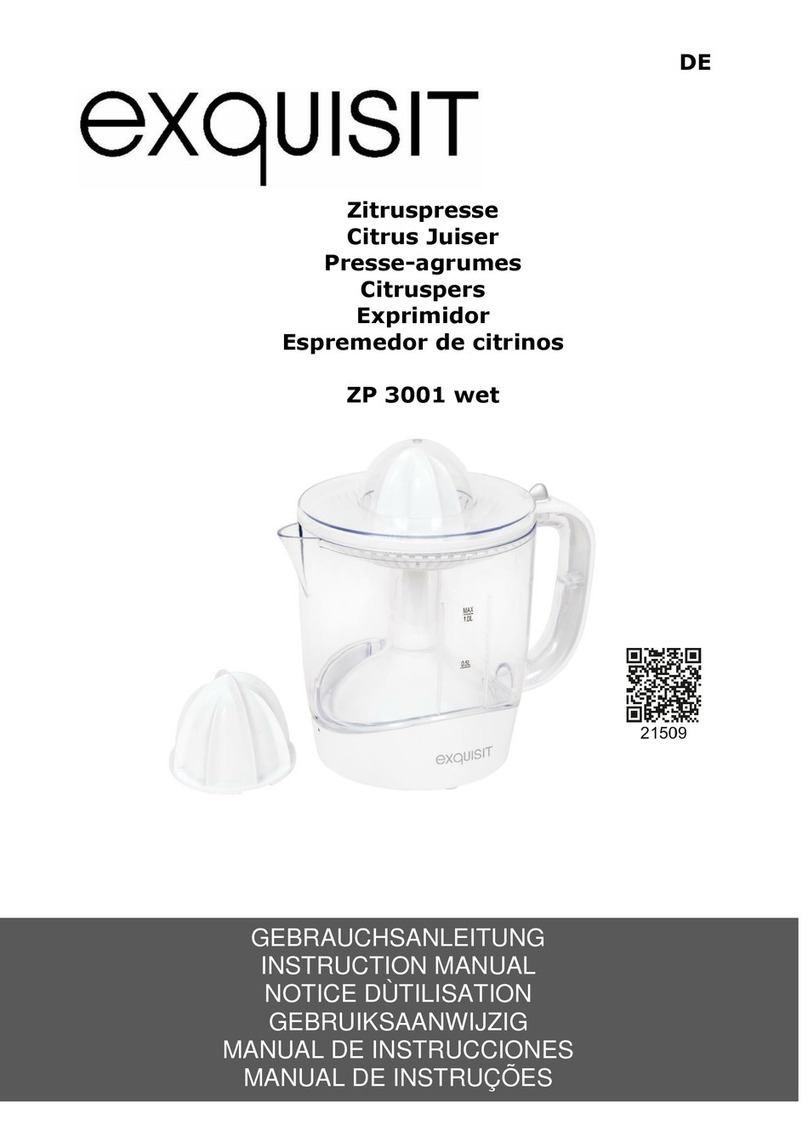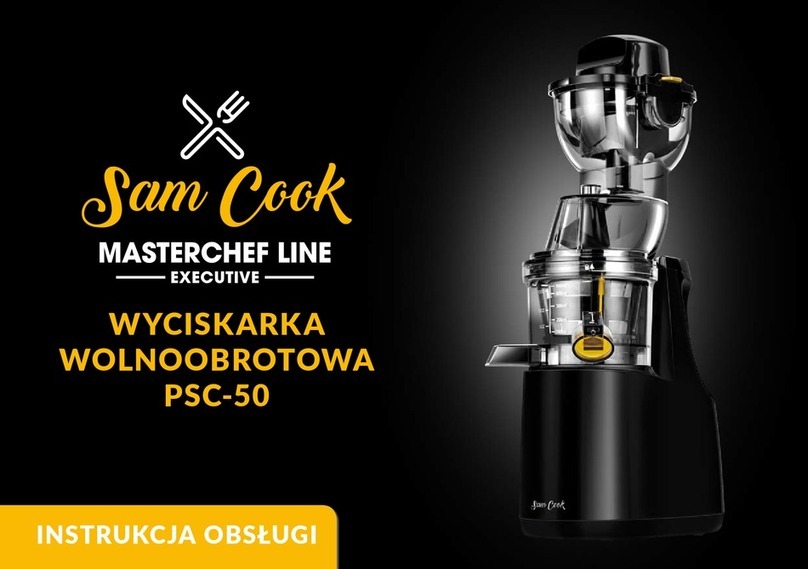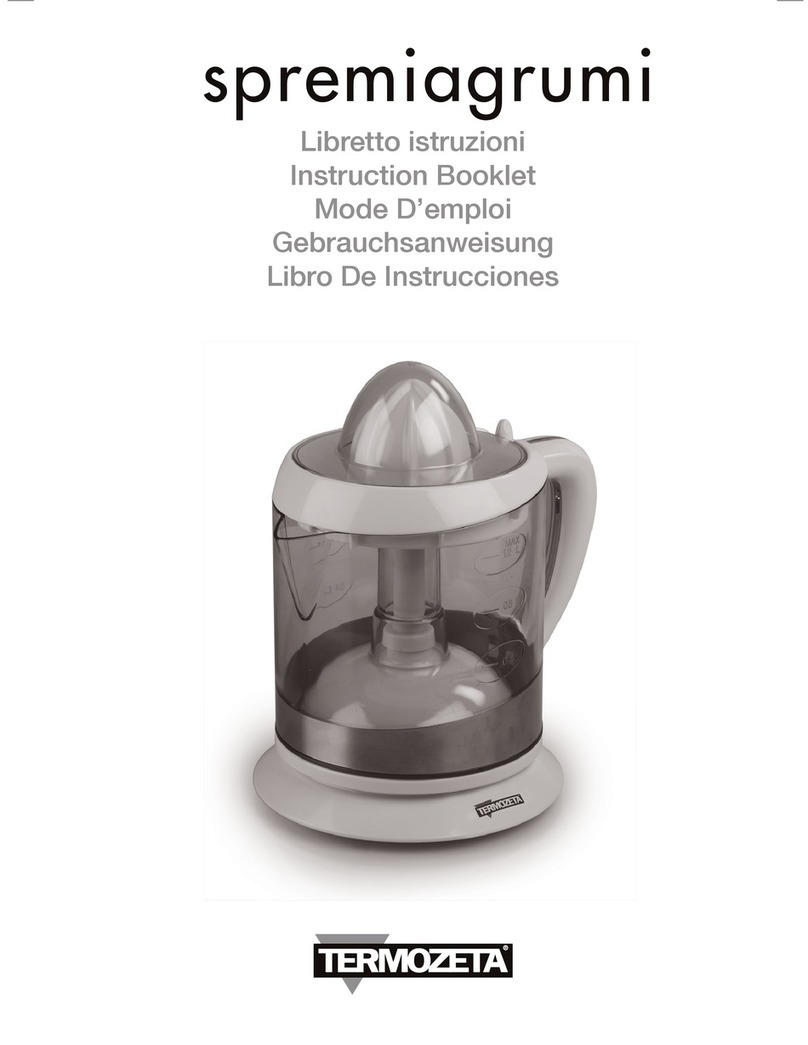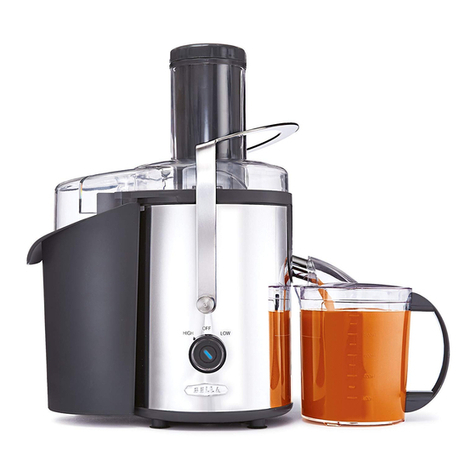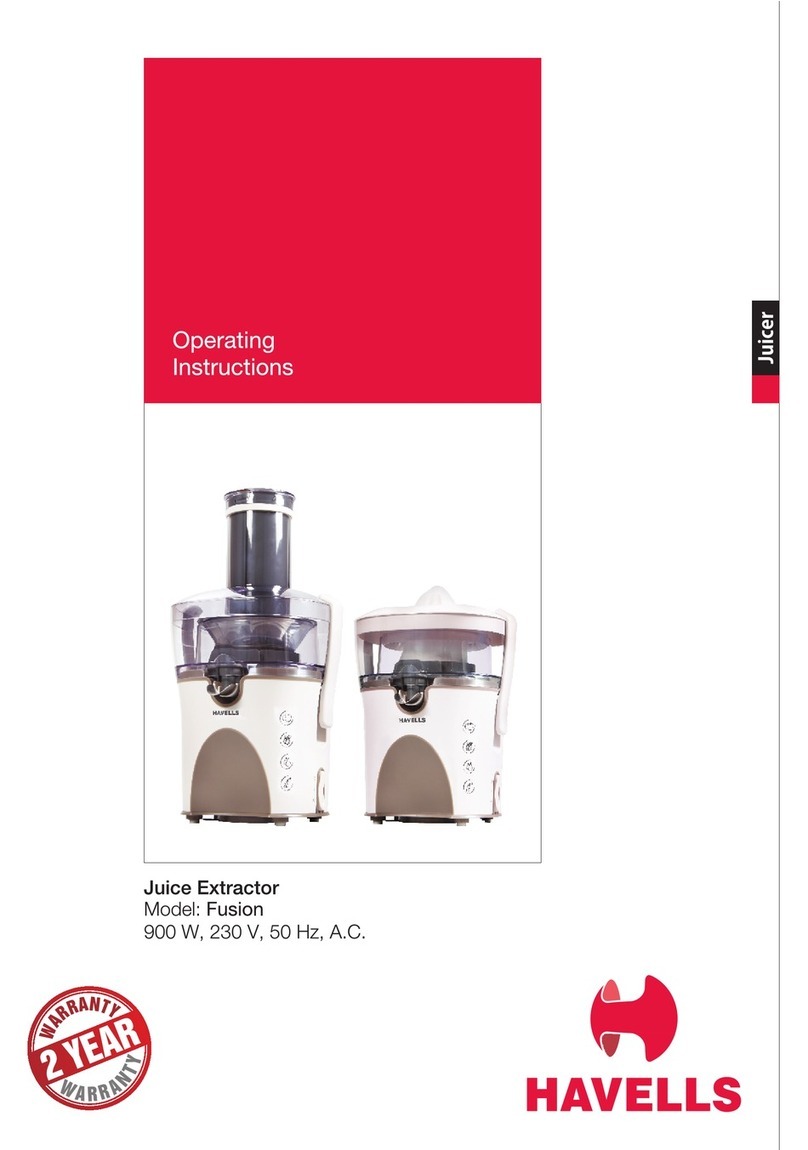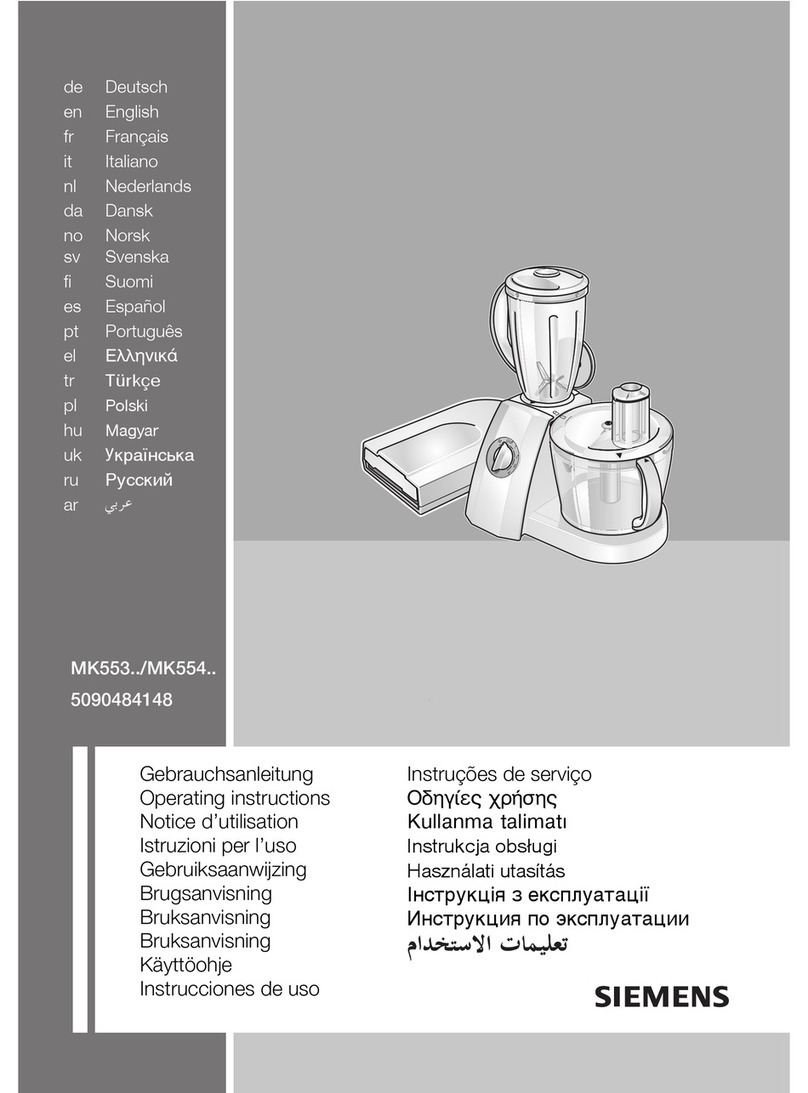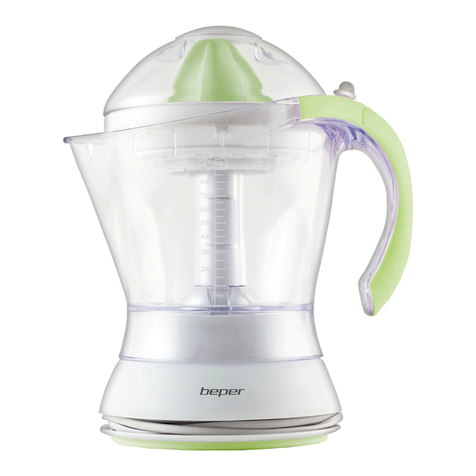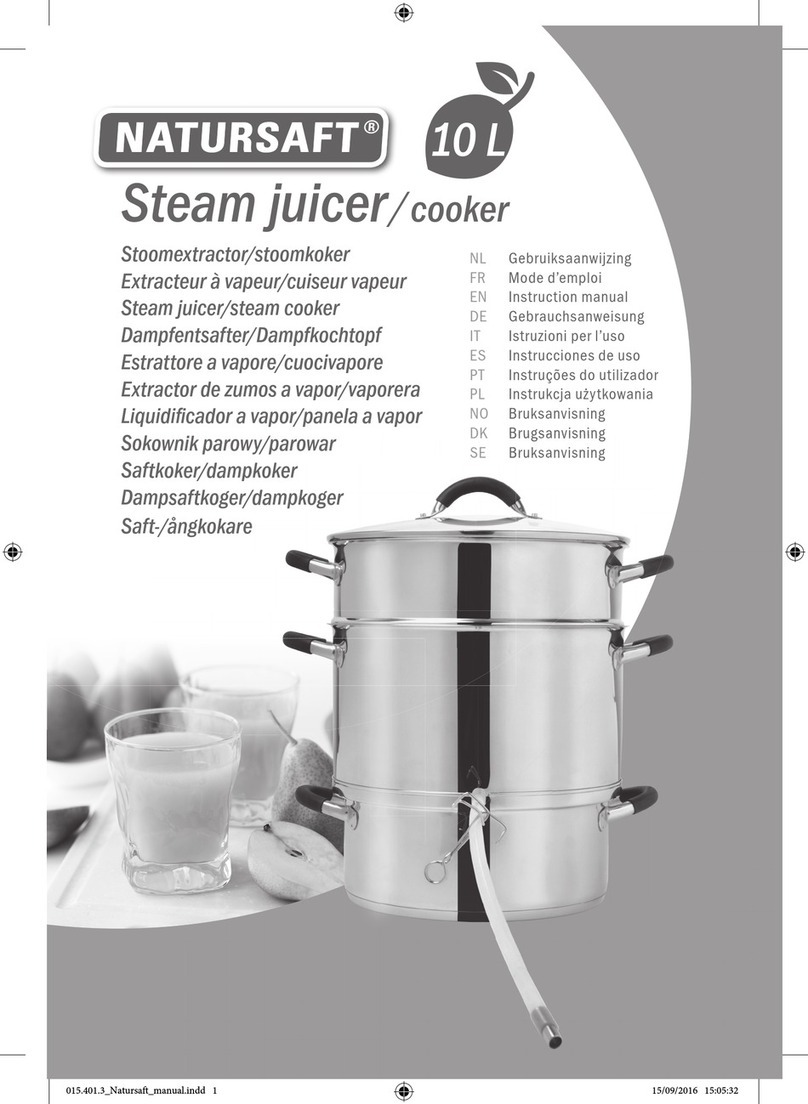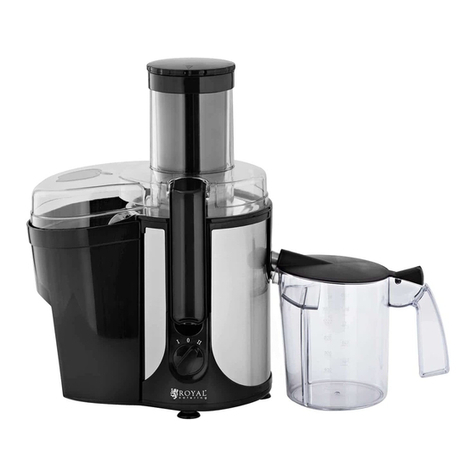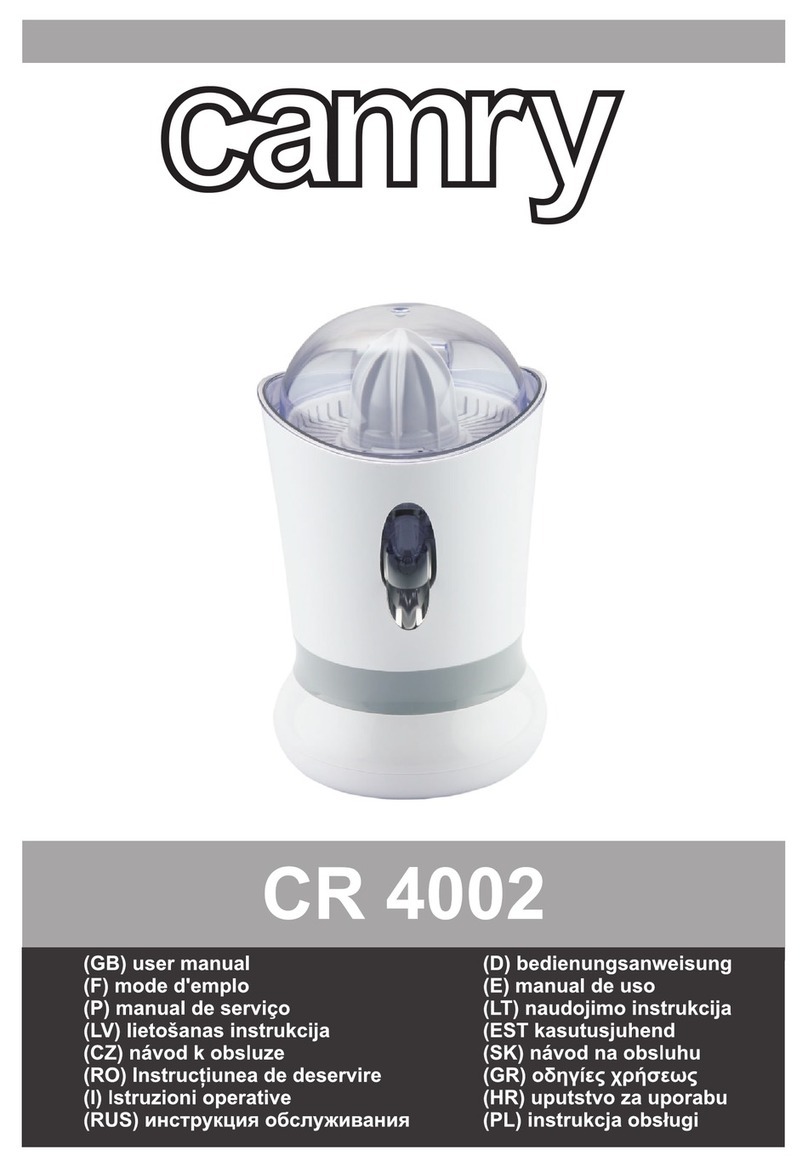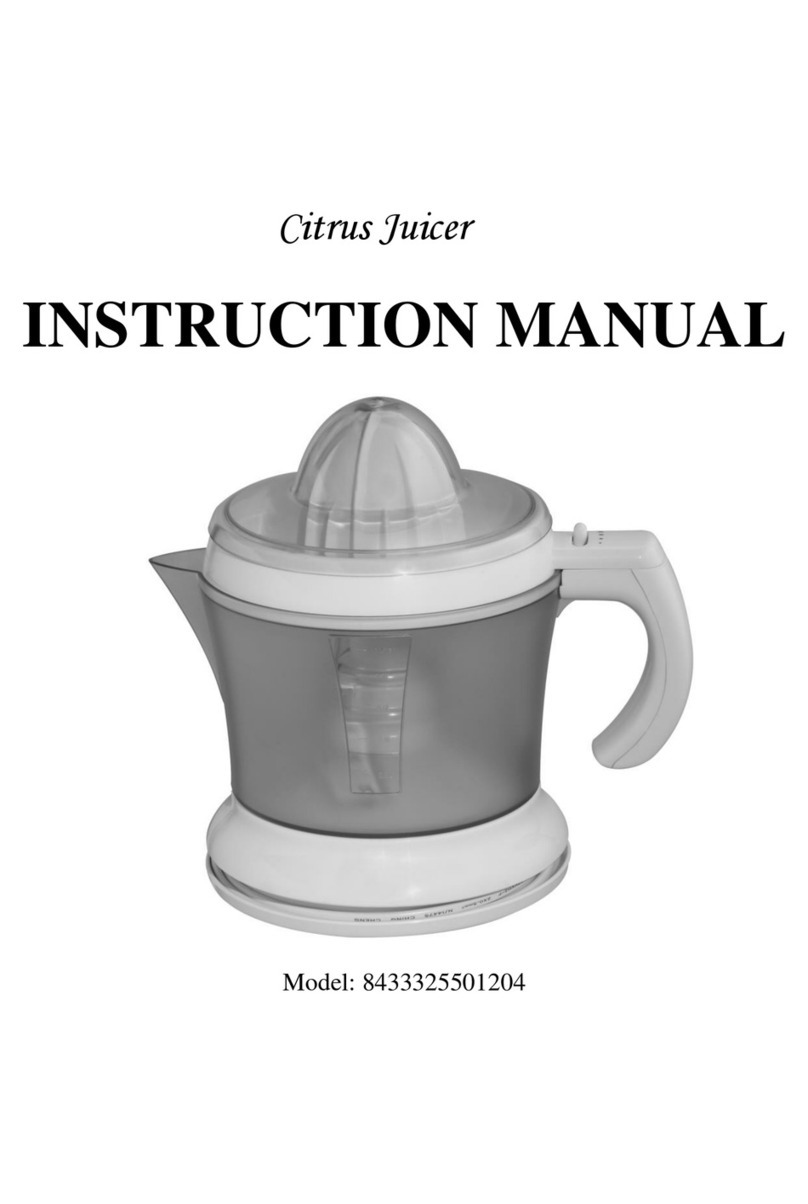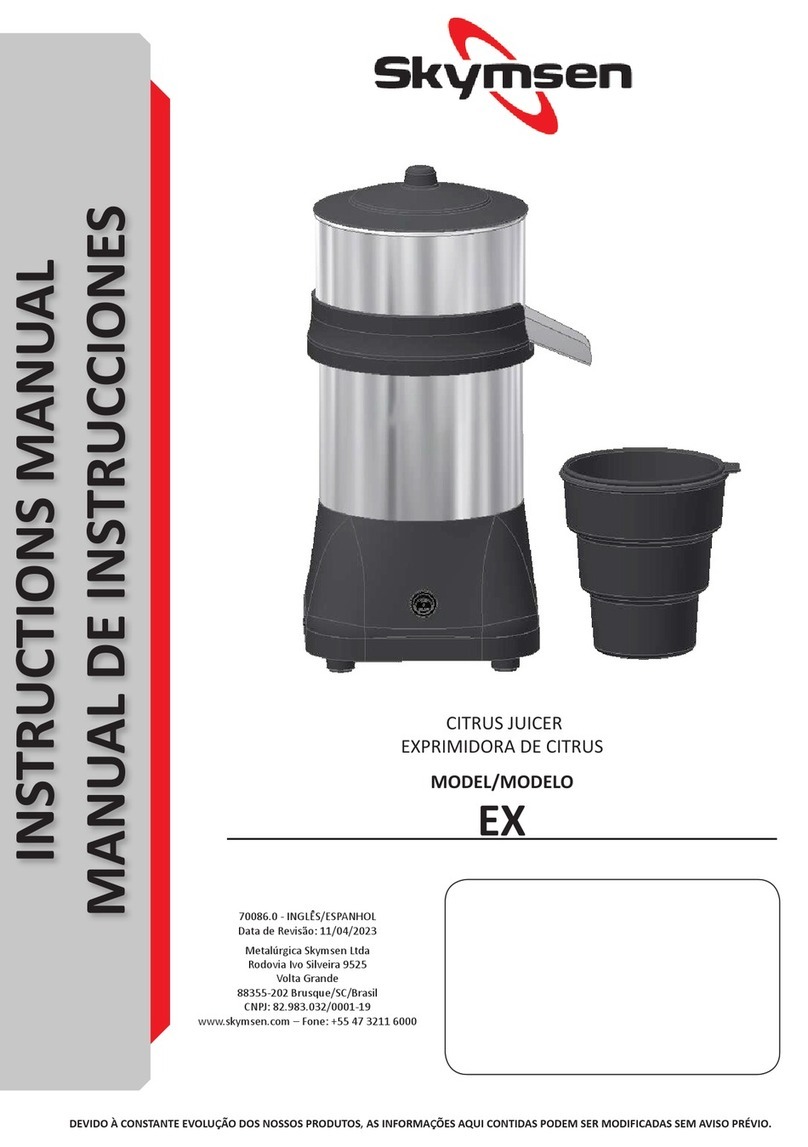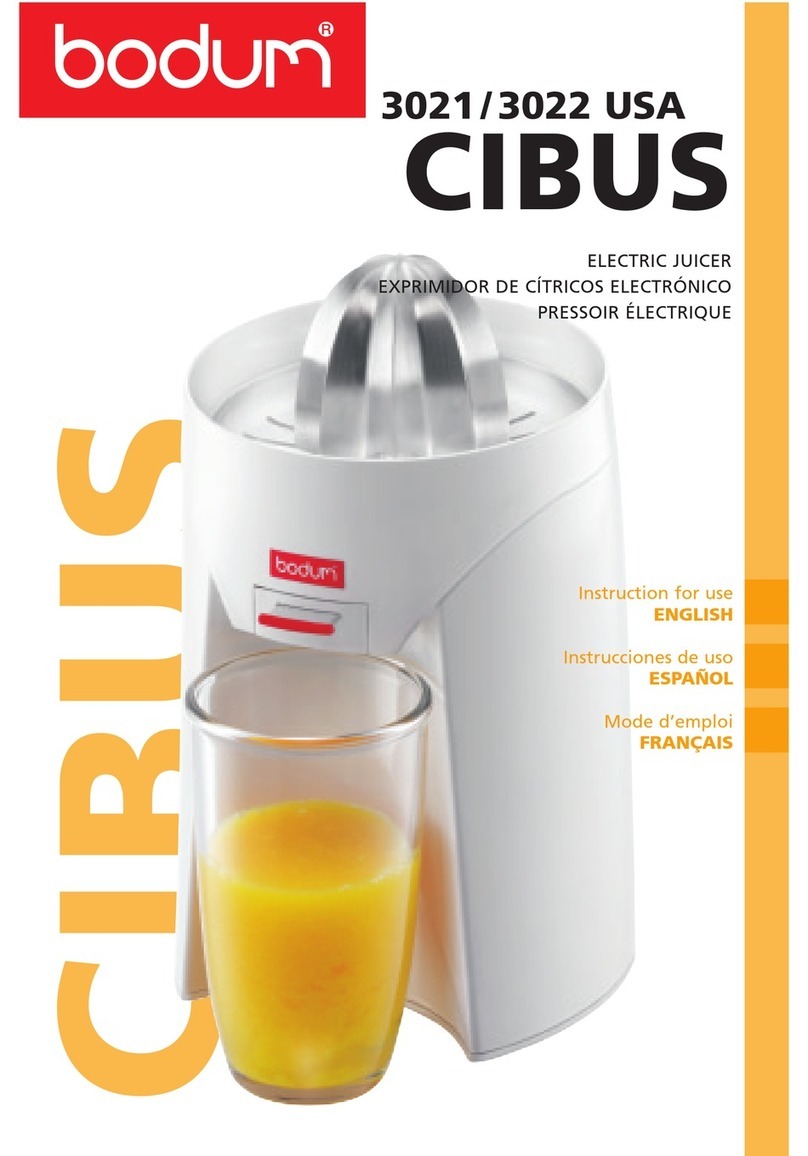
Using the appliance
The appliance only functions if all parts are assembled correctly and the locking arm is in locked
position.
1 Washthefruitand/orvegetablesandcutthem,ifnecessary,intopiecesthattintothe
feeding tube.
2 Make sure the juice jug is placed directly under the spout (Fig. 10).
3 Turn the control knob to setting 1 (low speed) or 2 (normal speed) to switch on the
appliance (Fig. 12).
Note: For hard fruits/vegetables (e.g. apples, beetroots and carrots) we advise you to use speed 2 (normal
speed). For soft fruits (e.g. berries, kiwi, grapes, tomatoes, cucumber and melon) we advise you to use
speed 1 (low speed).
4 Putthepiecesinthefeedingtubeandgentlypressthemdowntowardstherotatinglter
with the pusher (Fig. 13).
Do not exert too much pressure on the pusher, as this could affect the quality of the end result. It
could even cause the lter to come to a halt.
Neverinsertyourngersoranobjectintothefeedingtube.
5 Alignthegrooveofthepusherwiththesmallprotrusionontheinsideofthefeedingtube
and slide the pusher into the feeding tube (Fig. 13).
6 Whenyouhaveprocessedallingredientsorwhentheintegratedpulpcontainerisfull,switch
offtheapplianceandunplugit.Waituntilthelterstopsrotating.
7 Toemptytheintegratedpulpcontainer,removethelid,thelterandthejuicecollector.
8 Formaximumavourandfreshness,servethejuiceimmediatelyafterpreparation.
Note: If you want to store the juice in the refrigerator, make sure the lid is on the juice jug.
Tips
Preparation
- To extract the maximum amount of juice, always press the pusher down slowly.
- Use fresh fruit and vegetables, as they contain more juice. Pineapples, beetroots, celery stalks,
apples, cucumbers, carrots, spinach, melons, tomatoes, oranges and grapes are particularly
suitable for processing in the juicer.
- The juicer is not suitable for processing very hard and/or brous or starchy fruits or vegetables
such as sugar cane.
- Leaves and leaf stalks of e.g. lettuce can also be processed in the juicer.
- Remove stones from cherries, plums, peaches, etc. You do not have to remove cores or
seeds from fruits like melons, apples and grapes.
- You do not have to remove thin peels or skins. Only remove thick peels that you would not eat,
e.g. those of oranges, pineapples, kiwis, melons and uncooked beetroots.
- When you prepare apple juice, take into consideration that the thickness of the apple juice
depends on the kind of apple you use.The juicier the apple, the thinner the juice. Choose a kind
of apple that produces the type of juice you prefer.
- If you want to process citrus fruits with the juicer, remove the peel as well as the white pith. The
white pith gives juice a bitter taste.
- Fruits that contain starch, such as bananas, papayas, avocados, gs and mangoes are not suitable
for processing in the juicer. Use a food processor, blender or hand blender to process these fruits.
ENGLISH8
